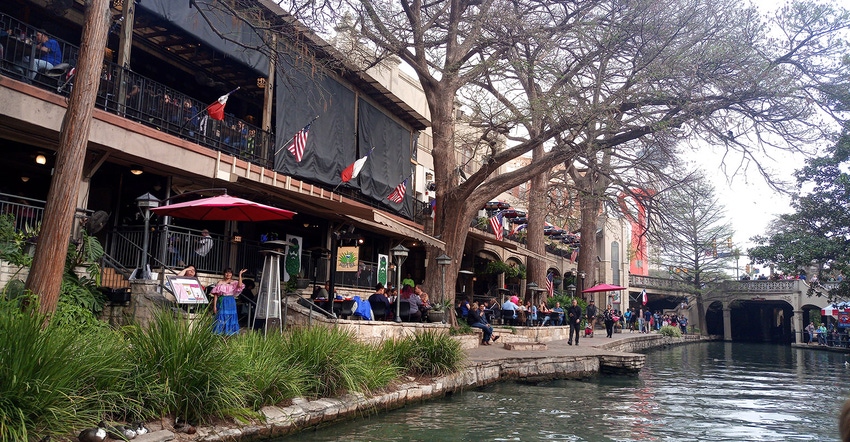March 15, 2019

I’ve got about limited time and limited battery to write this week’s post. Since we bounce back and forth between farming seasons and basketball season, it’s difficult for us to get away to some of the ag conferences over the winter. We really have to plan in advance. This year was no different, by the time we got to thinking about it, our schedule was full. In January, I was able to identify a few days that Rachael and I would be able to get away. I searched for the least cost direct flight to somewhere warm (other than Florida). Albeit, a week late, we ended up celebrating our birthdays in San Antonio this week. We stayed in the Riverwalk area where there was plenty to do within walking distance. Since only the youngest was with us, there wasn’t a push for Sea World or Six Flags. It’s a nice place to stay and I believe Commodity Classic will be there next year.


Back home, it seems like things are stacking up. Hopefully I’ll be surprised with progress, but I know three days isn’t a long time and there were plenty of other sticks in the fire when I left. I did keep up with important emails throughout the trip and caught a soil fertility webinar Wednesday morning before we went out for breakfast. Thursday will be a partial work day, as we ease back into things. Rachael and I have our last basketball game of the season to officiate. I expect Saturdays will be work days from here on out.
Before I left, I collected corn seed samples to verify quality. I also ran a couple of samples through our air blower used to transfer seed from the box to the bulk tank on the planter. We have suspected for a couple of years that under certain conditions seed is damaged. Visually I could tell one of the samples contained damage. We will do a cold saturated germ and pericarp test to confirm damage, whether seen or unseen. If we are damaging seed before it even gets the opportunity to grow, what yield are we leaving on the table? We may be looking for a belt conveyor seed tender very soon.
We are also working through a situation on a rented farm where the drain tile is broken on the downstream side in the neighbor’s field. The odd thing about this is the upstream side is on county maintenance. The portion running through our farm and the neighbor to the outlet is not, even though it is shown as a county drain. How can that be that the upper half is county responsibility, but the lower half is not? What’s that saying: ‘Somebody’s got some explaining to do….’ We’ll get with the neighbor and do some digging to figure out how best to remedy the problem. Odds are we will abandon the old tile in favor of a new one. I’m not sure what the county will do with their water. It needs to be a two-way street working with each other to solve these types of issues.
Well, made it through and the battery held out for me. Wish us luck as we re-acclimate to Indiana. At least we’re bringing the warmth back with us for one day!
The opinions of the author are not necessarily those of Farm Futures or Farm Progress.
About the Author(s)
You May Also Like






